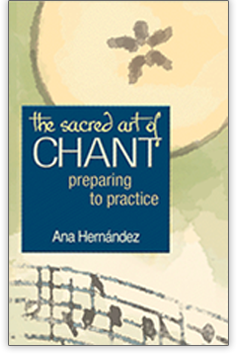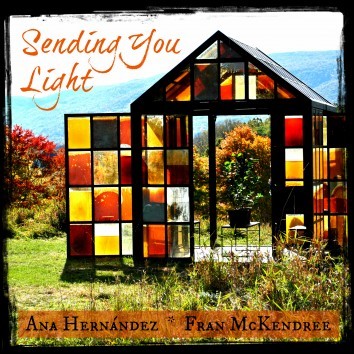-

Welcome to my world!
Check out my new album Banquet of Love, my first book The Sacred Art of Chant, buy albums or sheet music, find out where I’ll be appearing next, learn a chant, read my blog, or support my work. Thanks for stopping by!
-

New Album!
Banquet of Love: Vol. I of The Big Chants Project!
featuring:
Ike Sturm – bandleader, bass
Chris Dingman – vibraphone
Laila Biali – piano
Mike Webster – sax
Melissa Stylianou – vocal soloist
Chanda Rule – vocal soloist
Steve Rosser – vocal soloist
Zaneta Sykes – percussion
Ana Hernández – vocals, shruti box, guitar
Mark Dann – bass
The Choirs of Church of the Heavenly Rest, Mollie Nichols, director, Prince Nyatanga, asst. director.Learn more
-

The Sacred Art of Chant invites you to use your voice to live a deeply fun and spiritual life — no matter your religious background or vocal ability.
Honor the voice God gave you and learn to:
- Cultivate clarity focus, and compassion
- Improve your listening skills
- Raise your energy level
- Feel more comfortable in your own skin
Read More Or Purchase
-

Sending You Light
by Ana Hernandez and Fran McKendree
This wide-ranging collaboration is deep and fun, offering beautiful arrangements of folk, chant, blues, country, and simple songs by Ana Hernandez, Antje Duvekot, Charles Murphy, Eliza Gilkyson, Jimmy Messer and Trevor Hall, John Bell, Melanie DeMore, Naomi Littlebear Morena, and Rumi.
It features Billy Cardine on dobro and chaturangui, Duncan Wickel on violin, Ike Sturm on bass, Mark Dann on bass and guitar, Paul Friesen-Carper on cello, and River Guerguerian on percussion.
Learn more
Where Ana Will Be Appearing Next
HeartSong: Building Communities of Practice
June 10-12, 2025
CTSing your way to your best self, whether you belong to a small church or a larger parish, using music to deepen your prayer life. Led by author and artist Ana Hernandez, there will be singing, drumming, movement, group improvisation, and more, giving you the tools to grow the Beloved Community. Individuals and teams welcome.To register, Contact Trinity Retreat Center: retreat@trinitywallstreet.org or 917.594.5800
Ana Hernandez teaches chanting as a spiritual practice for individuals and groups. She is the author of The Sacred Art of Chant: Preparing to Practice, (SkylightPaths Turner Publications), a recording artist, composer, retreat facilitator, and song leader. Her workshops use sound to revitalize prayer and build openhearted, engaged, and playful communities. She loves collaboration, mischief, being here now, diving deep, and a good laugh.
Support Your Local Sacred Musician
